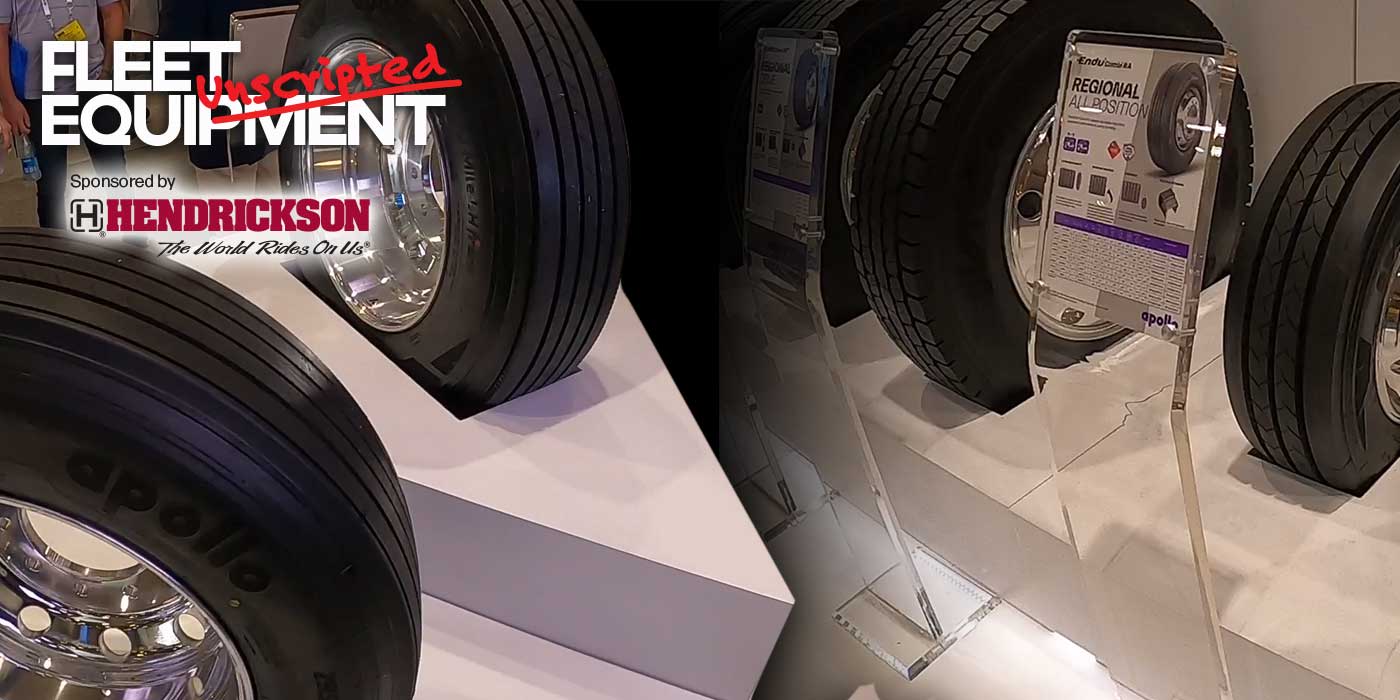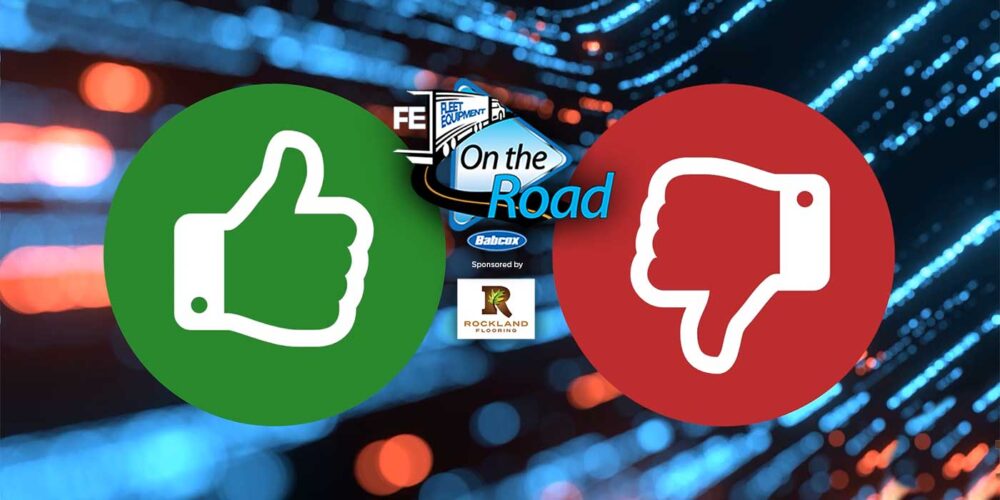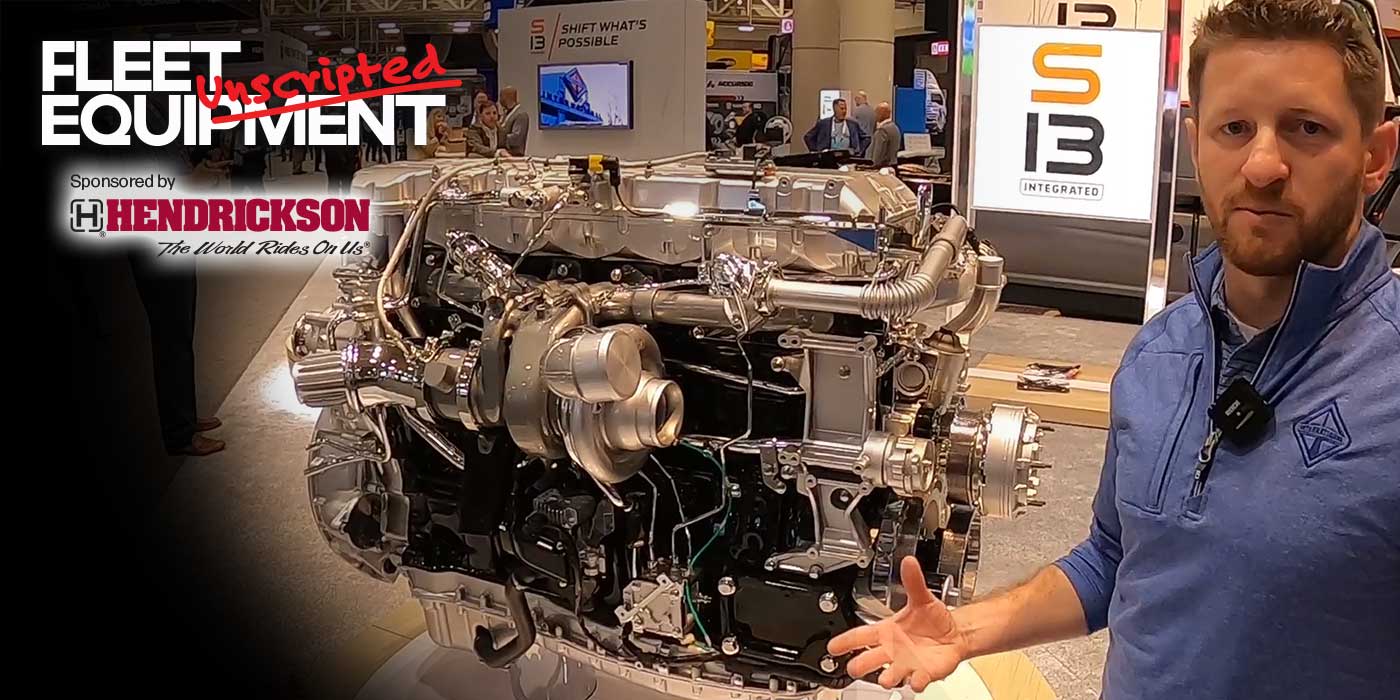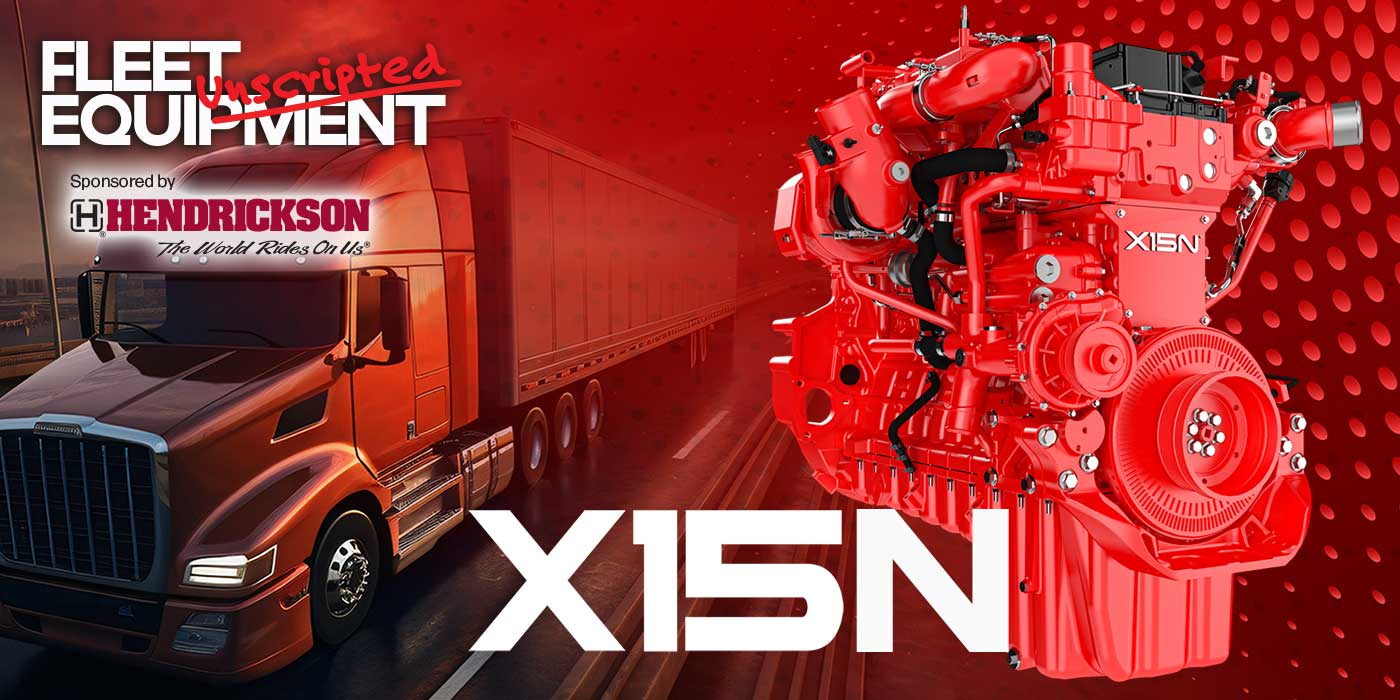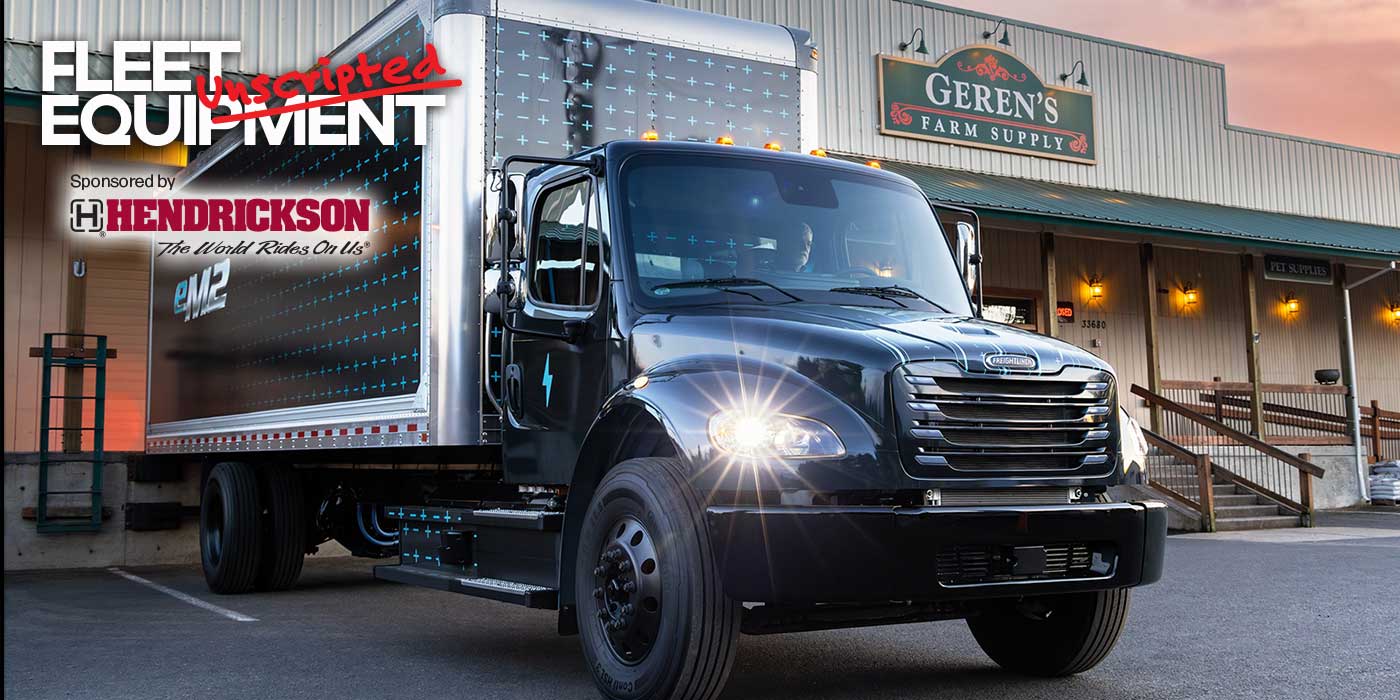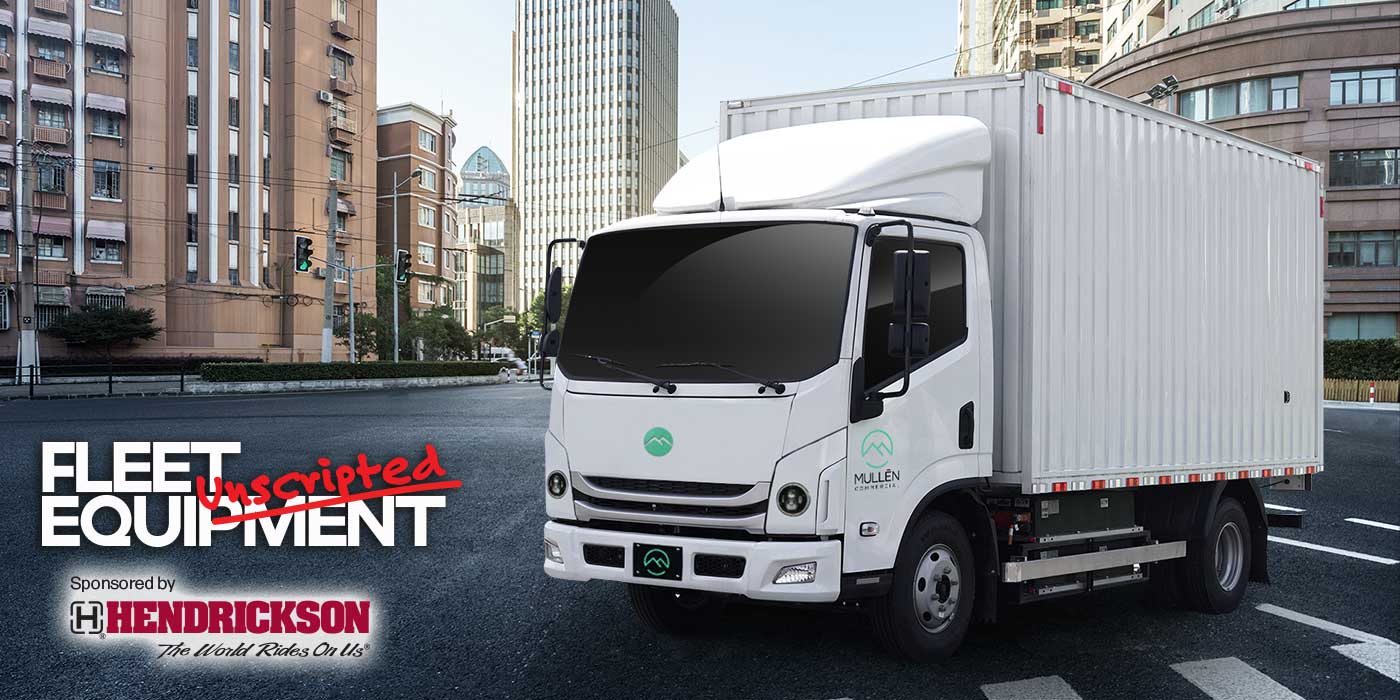“Right part. Right place. Right time.”
The aftermarket parts mantra is easier said than done. To bring the connected-truck dream of a technician standing at an open bay with the needed part in hand as the truck rolls onto the service lot, it takes the right technology, and perhaps more importantly–the right partnership. The technology to integrate the truck service industry with the aftermarket truck parts distributors exists, but it’s people who draw the lines to make the connection.
It starts with a conversation.
That’s why I connected with John Washbish, President and CEO of the Aftermarket Auto Parts Alliance. Washbish has a long background in heavy-duty truck parts distribution and an interesting point of view working in the automotive auto parts. The heavy-duty parts industry talks a lot about the “Amazon effect” and how our consumer expectations spill into our work experiences, which got me thinking–I can have a problem with my car and get it back in six hours, whereas there’s a problem with a truck and it sits for six-plus days. So let’s see what connections we can make to speed up truck service. Watch the video above for all of the insight.

No script? No plan? No problem. Welcome to Fleet Equipment Unscripted—the video interview series that connects you with the greatest minds in the heavy-duty trucking world.
Bookmark the Fleet Equipment Unscripted page to catch all of our Unscripted episodes, and subscribe to our newsletter by clicking here to have the latest news and in-depth trucking stories delivered straight to your inbox.
Fleet Equipment Unscripted is sponsored by Hendrickson.
Here’s a transcript of the conversation
Jason Morgan: Hi everyone. I am Jason Morgan, content director for Fleet Equipment and welcome to Fleet Equipment Unscripted. Today, we’re talking with John Washbish, President and CEO of the Aftermarket Auto Parts Alliance. John, it’s great to connect with you. Thanks for taking the time.
John Washbish: Jason, it’s certainly our pleasure to be here. Thank you, sir.
Jason Morgan: Well, and I’m glad to connect with you. We met up at HDAW not too long ago here and had some really interesting conversations, so I’m glad to bring that to our audience and talk about the heavy duty aftermarket, really getting to the crux of how fleets can work with their parts providers and distributors to speed up that throughput, reduce that dwell time. It’s really killing all the fleets out there. Real quick before we dive into this, just so we’re all on the same page, can you give us a little bit of your background, how long you’ve been working in the industry and then kind of what makes you famous?
John Washbish: Yeah, Jason, I appreciate that. Well you mentioned that we met at HDAW. And I was there for a number of reasons, but one of them was I had the opportunity of attending the dinner for the nominations of the Distributor of the Year, the Heavy Duty Distributor of the Year. And I was there because one of my brothers, brother David, is the President and owner of Lasko Heavy Duty Truck Parts, and he was one of the nominees.
Jason Morgan: That’s right.
John Washbish: So when you want to talk about where did I come from, well maybe I started in a heavy duty parts business, because that was the first family business that we were involved with. It started on my mom’s side. And Lasko Heavy Duty was a, and still is, a very prominent suspension shop in the Kentucky area with locations in Louisville and Lexington.
John Washbish: And one of the things that’s changed over the years is I remember the days, Jason, when I was a kid and somebody from Eastern Kentucky maybe in the coal mining area, would need a leaf spring for their truck. And they would wait for maybe up to a week to get that spring. They’d order it. We’d build it. Put it on a freight line and ship it. And that meant while that leaf spring was broken, that truck wasn’t operating. And I think there was a time in our lives when people felt like the owners of commercial vehicles didn’t care about how fast it got repaired.
On the automotive side, Jason, as we know when the consumer brings their vehicle in, they want like, “15 minutes? Can I get it fixed right now?” And if you said it was going to take a week, that dog don’t hunt.
And I think what’s really changed in the last 10 or 15 years is the owners of commercial vehicles also have become more urgent in their needs because they realize when that asset’s sitting on their lot not moving, they’re not making any money with it. And so because of that instantaneous, we got to get moving again, this has really changed the complexion of the parts business and the delivery of those parts.
Jason Morgan: Right, no, a hundred percent, and so much plays into that. We have the new technology coming in down the line, lots of data coming off the trucks. People like to talk about automated trucks, but if there’s a truck driving itself, it’s going to have to figure out how to get itself fixed as well. And then of course, drivers, if a driver is sitting there, he’s not making money either. We need to get them back on the road. So you have a really interesting perspective. You mentioned the auto side and the demand there. Definitely, and that is definitely from the fleet’s point of view, we need that too. We need this fixed right now. We can’t wait. So what opportunities do you see here in the market of making this faster, more efficient, getting trucks back on. What’s the opportunity here?
John Washbish: Well, it’s interesting, Jason, you mentioned technology and that’s been the buzzword for the last 20 years. But you also talked about autonomous driving, trucks driving themselves. And I think that so many people today when we talk about technology, they think about the technology of even diagnosing the repair that needs to be done on the truck or the autonomous vehicle. What we don’t talk much about is the technology that’s been developed to find the correct part faster and to get it to that repair shop quicker.
We sort of just breeze over that and go right to, let’s talk about the autonomous driver, and here’s the truck driving down the road. For a million years, the view of heavy duty parts is you had to have some guy, maybe even older than me, that had been in the business forever that sort of had a catalog in his head or her head. And they’d bring in the part and say this is what it is because as we both know, most heavy duty items can’t be looked up like we look up an automotive part, make, model, year. It doesn’t happen like that. There are a lot more variables that play into it.
Technology has advanced and those variables can be put on a screen. And we’ve developed an e-commerce tool at the Aftermarket Auto Parts Alliance, that’s transferable to the commercial and the heavy duty market. 50% of what we sell on the auto parts side is not looked up make, model, year anyhow. There’s a lot more question about what is the part, what does it look like? It could be a non app part, and that’s where things like a Google search engine, which we’ve built into our e-commerce tool, works. And we’re not exclusive in this field. There’s other people that have prepared this. The interchanges can be brought up at the tip of your finger with the help of some programs like [inaudible 00:05:22] developed a program called GFX that’s got imaging of the parts.
John Washbish: So I think that as we move into the future, the two big changes that we’re going to see is that the parts distributors and the heavy duty aftermarket are going to be able to find and identify and find those parts quicker for their technician community. And then the next step is that expedited delivery to get it there faster. I go back to my story of about the leaf spring being shipped to Eastern Kentucky. The whole part of that story was in addition to my brother David’s heavy duty business, his twin brother ran the family’s automotive parts aftermarket business. And when that leaf spring went to Eastern Kentucky, it actually went on one of the automotive delivery trucks, which in those days was once a week would go to Lexington, Kentucky and then would drop it off at a freight company that would take it the rest of the way.
So my family for many years utilized the agility of the automotive delivery system to deliver the heavy duty parts. And I think what we’ve seen, particularly certainly in the urban markets, is heavy duty repair shops, they’re looking for their parts to delivered in 30 minutes or less just like on the automotive side. And in the rural areas where maybe you came once a week, we’re talking about deliveries maybe more on a scheduled format, but at least once a day, many times, two, three or more times a day.
So I think some of the niceties that we’ve seen on the automotive after market as far as finding the part and delivery of the part and the whole inventory model, we’re going to take that model and it’s moving into the heavy duty arena. And the successful parts distributors will be the ones that can find the part quickly and efficiently and get it there first.
Jason Morgan: Right, for sure. I want to dig into this a little bit, because during Heavy Duty Aftermarket Week, I forget which … I can’t remember off the top of my head, but there was a panel. And there was a gentleman on the panel who said that, “Hey, the story that the shop gets the data and then the truck rolls in and then the part rolls in and then the technician is standing there with a smile on his face ready to work on the truck, that’s a wonderful story.” He’s never actually seen that happen in that order at his shop.
John Washbish: No, no, but Jason, it’s good to dream about heaven because heaven’s a fantastic playbook. And what was described in that panel is exactly the Nirvana that we’re looking for.
Jason Morgan: And fleets play a role in this. Yes, we need good partners to be able to do this, but to your point, I want to get to the identifying the parts and the things we need because the fleet knows. We know. We understand that in the trucking world, the specification, there are no apples to apples. It’s apples and oranges and all sorts of fruits rolling down the road on the truck side. But how can fleets from your point of view then, how can fleets be a good partner with you working with you, technology aside, just the people side of it, to better integrate like, “Hey, I’m going to need these parts or these needs or this is what we usually see as a parts needs,” and help you on that side too. Is there any advice there?
John Washbish: Yeah, there is. For quite some time here at the Alliance, we’ve been capturing data at the point of sale and providing that back to our vendor channel partners. So normally what a vendor sees from us is just an order. But what they’d really like to see is when you bought that part, did it get sold and where did it get sold? So we provide that unit sale information on a daily basis. Now when we talk about the fleets, for example, they know what’s in their fleet. Some of the repositories of the data that we collect at the Alliance would be allow us to look at a fleet, have an inventory of his vehicles as well as the parts, particularly the ones that are frequently replaced on those vehicles. That way we know we can have them in stock as close to that customer as possible.
John Washbish: If we look at some of the great vendors that are out there, when I was president of WIX for many years, one of the things that we really excelled in were these fleet surveys. So we would go out for the WIX distributor, and we would go into the fleet and we would survey his fleet, make a list of all the filters they needed, vehicle number one, vehicle number two, et cetera. And that was usually given to us in some sort of hard copy. All that information is collected electronically now. And all of our good heavy duty vendors will help with those type of functions.
John Washbish: More importantly, it’s what you said. The fleet knows what they have. They know what the vehicles are. Get out there, get an inventory, plug it in electronically. We have an e-commerce tool that manages this. And we’ve got it down to the detail that the fleet can actually come in himself and say, “That’s vehicle number 208 and here’s what I need.” We’ve already got that catalog put together. We know parts for vehicle 208. That’s where it’s going. And if you’re going to sell parts to major fleets, you’re going to have to provide that type of information.
So I say this to many heavy duty distributors, some of you are not as electronically savvy as you’re going to need to be. There’s an old friend of mine by the name of Jerry McCabe that was a marketing genius that I worked with for many years. And I’m telling you what, Jason, back in 2000, he said to me, “John, one day the data and the information on the part is going to become more valuable than the part itself.” And so the way that data’s got to come is electronic. And so we work very, very hard with our vendor channel partners to make sure we have everything that we need about their part, particularly any replete information that help install that part. So this whole idea of capturing the data electronically, the technician comes in and says, “This is the part that need.” Instantaneously, his part supplier knows about that. It’s on a truck and it’s out to you in 30 minutes. That’s the Nirvana you heard on the panel discussion, and that reality, that technology is here today.
Jason Morgan: And going back to it, fleets, there’s a responsibility here for fleets to help pull this through. We look at the OEM side and there’s a lot of investment going on there. And OEMs do a very good job. They know what’s on the truck because they sold the truck and they have all that information. But one of the other big points that came out of HDAW that we all know, but what’s good to say, is that the aftermarket provides a ton of value. And independent service repair shops are incredibly important because there is way more service load than even just OEMs could handle. And fleets want options. They want choices to be able to make. And we like, this is a relationship business. We still like knowing who we talk to, who we’re working with. Yes, technology’s important. Yes, we want to leverage the data. But I also want to be able to have a conversation with a person.
Going back to your point about when we talk about technology, we can talk about kind of some of the larger pie in the sky or futuristic stuff. In terms of parts and distribution and fleets betting partners, in what ways can they talk about the technology that you’re referring to and the data you’re referring to? Do you have any advice for them on when they’re looking for partners, asking about maybe what type of systems or inventory systems they’re looking at. Or you’ve talked a lot about yours here, but any kind of just general advice about, ask this question or see what they say about this, just to kind of give them a bead for, from your point of view, what you’d expect to have the answer to be?
John Washbish: Well, I think the one thing that you’ve really got to talk about heavy duty, Jason, is it’s a great relationship business. And so because of that, a lot of counter people have got a relationship with that technician or that shop. And they feel like we got to have this phone chat. I got to talk to Jason. If I can’t talk to Jason, we can’t do business. If you think about that on both sides of the spectrum, that’s not a good thing. For the shop, they shouldn’t have just one person that can order their part. And for the distributor, you only got one guy or one guy on the counter, this isn’t a good thing. The world has changed. We’re not working eight to five. It’s 24/7. So two in the morning if you’re looking for something, are you calling your buddy? I guess you could get him up at home and try to go through that routine. So it starts with people have the need and the urge, they want to look at things electronically. When we first opened our early e-commerce tool, our business to business tool, we were amazed that 26% of the shopping was happening after our locations were closed.
Jason Morgan: Oh, wow.
John Washbish: And what we saw is the technician was going home at night, maybe had dinner, had a cup of coffee and cocktail, whatever the case may be, and then decided to go online and shop. And they were buying shop supplies, paper towels, floor dry, fluorescent light bulbs, just really shopping. So the one thing we knew is that, do you think when he comes in in the morning, he calls the local parts place and says, “Hey, I’ve been thinking, I need some paper towels.” We think a lot of this business has been plus business because they can shop.
John Washbish: The other thing that both the shops and the distributors have told us is that, Jason you’re in Ohio, so I’m guessing you might be an Ohio State fan. I don’t know. But if you’re talking to your local guy down the street and you’re both Ohio State fans, how much time do you waste on Monday morning talking to each other about the game on Saturday? That’s not really productive for either one of you. I mean, you’re very happy about it, but if I own either one of those places, I don’t like it. If we can transact business more on an eCommerce fashion, all that BS is cut out and we just get right to the business.
John Washbish: So I think that the greatest advantage here on both sides is Mr. Shop, if you could partner with a supplier that allows you to order electronically, you’ve got a much more secure relationship and it’s open 24/7. You don’t have to worry about one person on your side and one person on their side. And to the distributor, it’s the same thing in spades. And maybe it gets to some point that you don’t need as many counter people. Maybe this is technology becomes efficient and helps you reduce the head count. And the one thing I will guarantee you, Jason, it’s more difficult to find people with heavy duty experience each and every day.
Jason Morgan: Yeah.
John Washbish: So the only way you’re going to be able to manage your distribution center and your parts selling operation was with some sort of eCommerce tools. You can’t go down this highway of life’s saying, “I’m going to be the last man standing with the best parts guys on the counter, and I’m going to have them all here.” You may be, but that’s not going to take it to the next world.
Jason Morgan: Well and on the fleet side it’s interesting, because you do have to step back and really value that investment from your partners and weigh the relationship value there, too, like you said. The cool part is that with the e-commerce, it allows business just to happen. And so you can take time to have the Ohio State football call once a quarter or whatever, and that’s why you’re calling. Just checking in, because all the businesses happening underneath that surface and it’s all still going back and forth.
Jason Morgan: And the cool thing I like that you mentioned about off hours ordering, too, just as an anecdote, because I was amazed by this. I just happened to be driving back. So we’re in Akron, Ohio. I happened to be in Columbus, Ohio, recently driving back at 1:00 AM. But it was a cool old night, got down to 20 degrees. And I promise you, there were half a dozen trucks on the side of the road in my hour and 45 minute drive at 1:00 AM. And every time I drive by, you feel terrible because it’s like, and my wife was with me. She’s like, “What happens to those trucks?” And I just had to say, “I have no idea. I hope they have a good service relationship and a good parts versus because it’s 1:00 AM and someone’s getting a phone call that they’re not happy about to get that truck back up.” And then if we can get to this point and working with people, that’ll help that out tremendously.
John Washbish: Well, there’s no doubt. And we’ve talked a lot about the commercial vehicle. I don’t want to underestimate the amount of agricultural and heavy duty business that’s in the rural markets that may not be controlled by big fleets. It’s amazing to me when we get in some areas, let’s take Arkansas, where there are thousands of independent loggers. When that guy’s truck goes down, he’s out of business. That’s his whole family. All right? He’s standing in one of our counters at a bumper to bumper truck parts store in Arkansas in 15 minutes saying, “Do you have this, this and this?” And in that particular case, because we know the market well, we’ve collected enough data, they’ve got the right parts for those logging trucks that are coming their way.
We see that in many of the agricultural markets, when we get up into the make states, when we really get into the data, Jason, it’s so cool to look at the variety of parts that we’re selling. In fact, as we encouraged all of our distributors to really take a look at heavy duty, if they weren’t in it. So many of them were surprised to find out how many group 31 batteries they were selling, how many filters, four, five, and six category they were selling. They didn’t even know. Why did that happen? Because they had it in stock. And certainly my friend, in the last two years during the pandemic, this whole issue about availability and can you find it and is it here now? Everybody has sort of taken the, well, I always buy everything from you and I’d never buy from anybody else, except you ain’t got it now, so I’m going to buy it from somebody else. So a lot of people are trying on new dance partners and the one that can find it and get it to you the fastest, that wins the game. And you’ve noticed in all of this, I never said anything about price.
There was a day when it was price, price, price, price, price. But the other day I was talking about my brother David and what a great shop he’s running. Recently I was on the phone with him. It was six in the evening. They were closing up the Louisville operation for the day. And a local fleet shows up with a concrete mixer at five till six. Says, “Is there any way possible you can get these Springs fixed and have it to me by five tomorrow morning?” And my brother says, “Well, it’s possible.” And the guy says, “I don’t even care how much.” And my brother says, “Pull it into bay one.” But I mean, that’s the urgency that’s there. And if you have the ability to fix the part, and in my brother’s case, he can build the spring if he has to, so he’s always a yes. But that’s the key. If you can get the part and what you’re seeing on the commercial vehicle, heavy duty side, they don’t want that vehicle idle anymore. I need it operating, and so I’ll pay whatever I got to pay.
John Washbish: This isn’t a signal to all the vendors you can take prices up 50% and nobody’s going to scream. That’s not the case. But this really comes back to play on what’s the most important things and the two right now are, can I find it, can I identify it? And then second, when can I get it?
And then we talk about price.
Jason Morgan: Right well, no. I mean, the number of fleets probably shaking their heads right now in agreement of, “Oh yeah, I can’t believe I’ve said that that number of times this week.” That’s not a fun conversation either. But if we get the truck going, it can all be worth it. I can deliver the load. I’m not losing a load there. I’m keeping my drivers. It’s not a fun thing. These things happen. Service events happen. Anything that we can do on the front end and the service side to get people rolling is important.
John Washbish: Yeah. Well, I’ve seen a big attitude change, heavy duty as well as automotive on where the technician might have hesitated, price shopped. What’s it here? What’s it here? What’s it here? It’s more of, where is it? And do you have it? And I think that’s the key. And I think the agility that we’ve always displayed at the Aftermarket Auto Parts Alliance has become available because of the robust technology package that we have. And as we plug that technology package into our truck parts offering, we will be able to bring those same efficiencies to that side of the arena.
Jason Morgan: So fleets need to work with their partner to build that, not just wait. A lot of them work on the OEM side. You can’t just wait for this to be handed to you or be handcuffed to a certain dealer group or anything like that. You want to build your own partnership. You want to have options. And you need to work with the people to bring this along to get your trucks rolling. It’s really a holistic view. And man, if you can give others a run for your money, then you got to find the best partner. Right?
John Washbish: Absolutely. But you are right about the OEM side. On the commercial vehicle, heavy duty arena, the OEMs do a better job in the aftermarket then they do on the automotive side. On the automotive side, they’ve got about maybe 25% market share at best. They don’t have enough bays to fix all the cars that’s there and neither do the OEM truck dealers. I’m going to suggest that the OEM truck dealers have done a nice job because they hold that warranty pistol at your head and say, “If you try to look outside the box, then we blow you up.”
But you and I both know there’s a huge aftermarket infrastructure in the United States, Canada and Latin America. The further south you get, the more exciting heavy duty market. No, I mean, I’m not kidding. The further south we get, they keep heavy duty vehicles forever, and so the aftermarket is just absolutely tremendous. And I think in the United States, it is true that the OEMs do maybe a better job with the fleets than they do with the independent fleets, but somebody that’s running 12 trucks or less is our kind of people and works very, very nicely in the independent truck parts aftermarket.
Jason Morgan: Well and even that, really any fleet size. Because the nice thing about working with a group like you all is, you don’t care what name plate I’m running over there. You know what I mean? You can get me up and going and this relationship can go a lot longer than when I have to turn around and play a different relationship off over here on this guy, I still have my service covered over here.
John Washbish: Jason, you’re right on, and we support national brands. We have our own exclusive brands. But the most important thing is to get a quality part to the customer. In this same vein of what’s going on with pandemic, I was home recently visiting both my brothers, the automotive shop and the heavy duty shop. And in the automotive shop, we were looking at one particular area of parts and there were multiple brands of the same part in the section. And I said to my brother, “Doug, I thought you primarily supported blankety, blank brand.” He said, “Well, I do, but you know how fill rates have been.” I said, “Okay, when you ship to your technician, what brand does he most prefer?” And his answer was, “The one I can ship right now.”
Jason Morgan: Right. A hundred percent.
John Washbish: And I think the biggest mistake that maybe heavy duty distributors and automotive distributors make, is they think it’s all about the brands that they’re selling. They don’t realize their own brand. These technicians will buy whatever my brothers ship to them because they know my brothers will stand behind those parts. And so if you’re a quality parts distributor, you really make the brand decision because the technician needs the part and they trust you to deliver them a quality part.
Jason Morgan: Right. I appreciate you delivering this quality insight, because we could probably talk for another 10 hours and it would be wonderful, but I know you’re busy. I’m going to let you go, John. This was wonderful. Thanks for taking the time. I’m sure we’ll talk to you again very soon.
John Washbish: Jason, I appreciate it. Thank you. And thank Babcock’s Media for the great coverage they give our entire aftermarket. Because remember, the aftermarket is what keeps America rolling.
Jason Morgan: 100%. Need those options. Build those relationships. John, thanks a bunch.
John Washbish: Thank you, sir.




